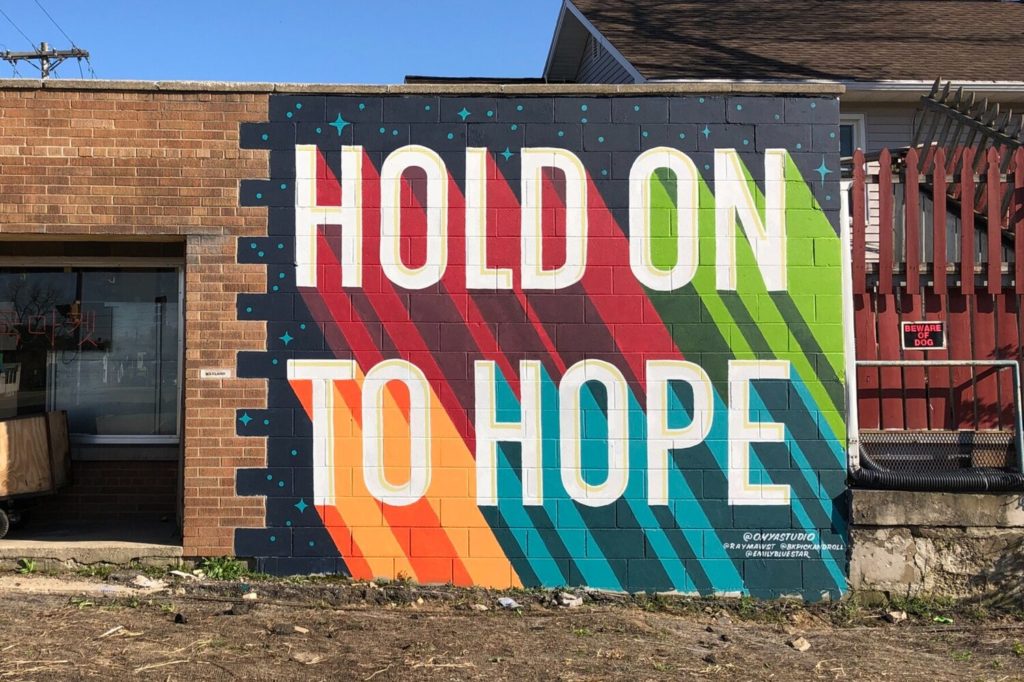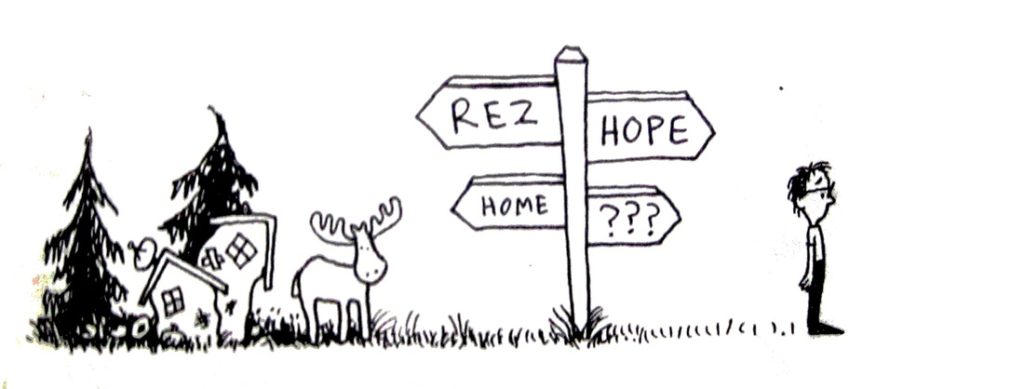
In March 2020, as schools and libraries across the United States closed their doors to COVID-19, the stack of library books frozen on my nightstand included the all-too-prescient titles The Paradox of Hope and Embracing Hopelessness. As the stay-at-home order stretched from weeks into months, news shifted to the hundreds of thousands of demonstrators worldwide responding to the continued killing of Black individuals by police officers. In the early days of those demonstrations, podcaster Ezra Klein asked author Ta-Nehisi Coates what he saw as he looked at the country. “I can’t believe I’m gonna say this,” Coates replied, “but I see hope.” It was a year when questions of how to hope rose to the surface of social awareness, sometimes like the sun at morning dawn and other times like a reflux of bile in the throat.
A year later, Coates’s hope may have seemed misguided. For many, the events of 2020–21 felt more like an all-out assault on hope. Nonetheless, people spray-painted the word hope across hospitals and boarded-up windows, flew it over immigrant detention centers, wove it into campaign rhetoric, and shouted it at protests across the country.

In a newly released issue of the Journal for the Anthropology of North America that I co-edited, I make a case that we need to study these two topics together: hope and whiteness. Hope is in many ways central to the project of white supremacy. A Native American character in Sherman Alexie’s novel The Absolutely True Diary of a Part-Time Indian muses: “I don’t know if hope is white. But I do know that hope for me is like some mythical creature.” Hope is a recurring but often problematic theme in theories of race, particularly as it is articulated amid whiteness. Hope has been weaponized against Black and Brown bodies and also utilized as a force of antiracist resistance. Thus, revolutionary forms of hope often clash at the front lines of antiracism struggles.
Why Hope? Why Whiteness?
Different people at different times and places hope differently. Among the many ways that people with greater power exert control in society, they often find ways to shape other people’s hopes.
The project of creating a racial caste system, then, involves hope. Hope is both a technique of survival and of oppression. As many scholars of race and whiteness have noted, one technique to maintain a hierarchy of races is through promoting certain narratives of the way the world works. For example, France Winddance Twine and Charles Gallagher point out that whiteness is maintained in a dominant place in society through narratives about the cultural deficit of other groups, appeals to nationalism, and the use of nostalgic mythic pasts. To these, I would add that ideological narratives of whiteness include white forms of hope.

Latino social ethicist Miguel De La Torre offers one of the most scathing critiques of certain kinds of hope being a project of white supremacy. He argues that Western practices and meanings of hope stem from Hegel’s conception of history as God-directed teleological political evolution, implemented through imperialist capitalism and maintained through privileges scavenged from Black and Brown bodies. Many more race scholars including Derrick Bell, Cornel West, and even Barack Obama have wrestled deeply with questions of how or whether to hope, if hope can be misused as a way to settle for the way things are rather than struggle for something better.
In my full article on this topic, I consider what hope is. How might we begin to compare different forms of hope? I list a typology of differences in hope, such as what is hoped for, how secure the hope is, and what is the basis of a hope.
But I’m not interested in hope just as a theoretical idea. Ultimately I want to know, if certain ways of hoping keep people from questioning the harmful ways that society works toward white supremacy, could changing people’s ways of hoping be a part of ending racism?
Using early interviews from my on-going research among white Christians, I find that white Christians who spent many years actively engaged in antiracism did show changes in the ways they hoped. And these changes were central to the ways they deepened their commitments to addressing racial injustice.
That’s good news. It suggests that not only can people change, but there’s reason to hope for changes in white supremacy more broadly. I draw on the philosopher John H. McClendon who points out that we must remember that whiteness is not the same as white supremacy. While the resiliency of white supremacy should not be underestimated, I argue that we ignore reams of historical evidence of even highly tenacious structures changing over time if we theorize whiteness as something inherently immobile. That is, I suggest that there is a space to hope for white subjectivities to change. What it means to be white could become something else, something less oppressive, and something worth hoping for.
This blog is adapted from “Introduction: Hopes of and for Whiteness” in the Journal for the Anthropology of North America, December 2022. You can find the full article here or contact me to request a copy.

